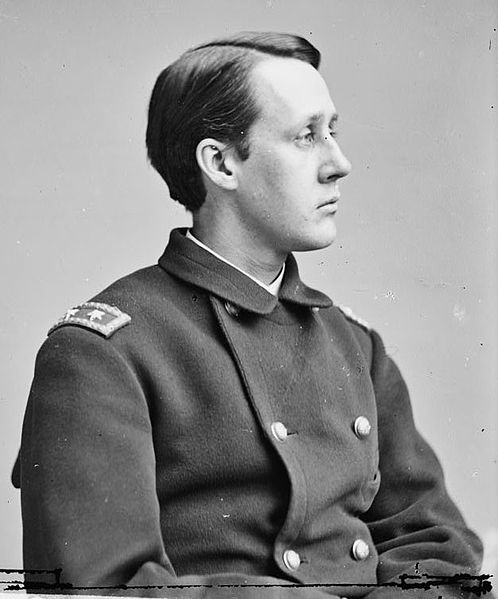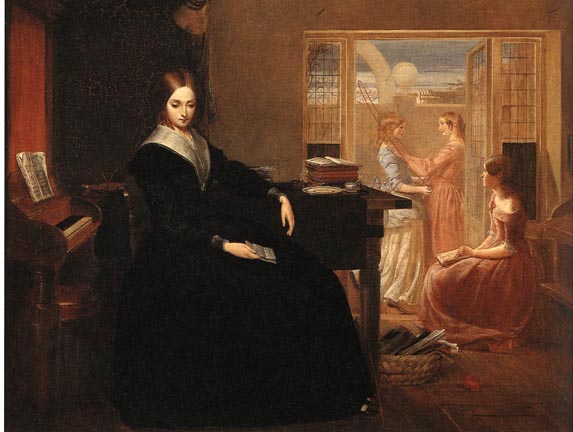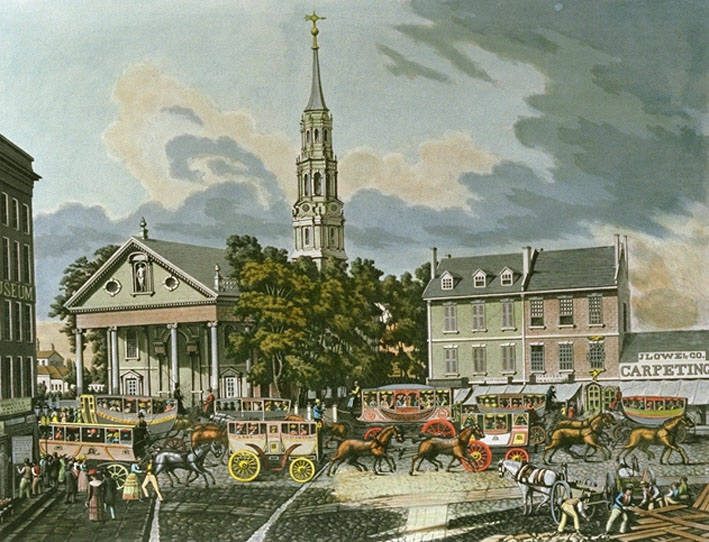Arabella Barlow: A General’s Wife, Nurse & Sacrifice (Part 1)

Arabella has been seriously ill, but the fever is broken & in time she will be well again…[i] wrote General Francis Barlow from the siege lines at Petersburg during the summer of 1864. Anxiety still nagged, despite the confident words; his wife had been weak and exhausted when he sent her away to rest in Washington City. She would not slow her efforts to care for the sick and wounded soldiers, and now disease threatened her.
In those days of unrelenting pain after Antietam and Gettysburg, she’d stayed with him and probably saved his life. What if she needed him now? What if she wasn’t better? Letters traveled too slowly to bring much peace of mind. What if the words he’d just penned to his mother were only false hopes? What if – no! She couldn’t die… Death could not conquer his strong, independent, beloved Belle. Her quiet strength and good sense balanced his impetuosity and patriotic passion – what would he do without her? The young general waited. There was nothing to do in this situation except wait.
Arabella Griffith Barlow was not a typical lady. Traditionally, during the American Civil War, ladies supported the war effort and their soldiers from home, gathering or making supplies, writing letters, or organizing fundraisers for the relief agencies. If a lady had a household to manage and children to raise, it was not likely that she would volunteer as a hospital nurse or take work in a government office. If she and the family were very lucky, their soldier might get a furlough home, or if he was an officer they might be able to visit him at camp. Circumstances gave Arabella Barlow confidence and independence, and with no home or children clamoring for her attention, she followed her husband to the battlefields.
In the spring of 1861, Miss Arabella Griffith was an old-maid in 19th Century thinking. Born on February 29, 1824, she spent her youth with an elderly relative since her own family was fractured by divorce. She attended school at St. Mary’s Hall, and, by 1846 had moved to New York City, where she was likely employed as a governess. Welcomed in society, Arabella spent the next decade and a half, looking after children, mingling with middle-class socialites, thinkers, and artists, and occasionally writing for the New York Tribune. She was a respected single-woman, and diarist George Templeton Strong described her as “certainly the most brilliant, cultivated, easy graceful, effective talker of womankind, and [she] has read, thought and observed much and well.”[ii]

Exactly how Miss Griffith met Mr. Francis C. Barlow is a historical mystery. Perhaps he read her writing – he did write for the same newspaper in between his work as a up-and-coming lawyer. Likely they were introduced at a social gathering since they had common friends in middle-class New York society. Both were respected, ambitious, and well-cultured. Whether they first danced at a party, bonded over their views of literature, argued about art, or agreed about abolition and Union, affection followed respect. Neither Arabella or Francis (called Frank by his close friends and family) were wealthy and both had about the same level in society, so it’s altogether probable they were in love. Yet society frowned at the couple – there was a ten year difference in their ages; Arabella was significantly older than the young lawyer.

On April 20, 1861, Frank Barlow enlisted as a private in the 12th New York Volunteers. That evening, in St. Paul’s Chapel in New York, Miss Griffith promised to “love, honor and obey” and changed her name to Mrs. Barlow. The following morning Private Barlow kissed his wife good-bye and reported for duty. Exactly how Arabella felt about these sudden changes or how she was persuaded to marry so impulsively isn’t known. None of her letters to or from her husband have been found. During the summer, she travelled to Washington City, the first of many trips Arabella would take to be closer to her husband.
With his three month enlistment completed without firing a shot in battle, the couple was reunited and spent time visiting friends. Mrs. Daly – an acquaintance in New York – thought Arabella looked happy, but was scandalized when Frank called his wife “Belle” in an obvious display of affection in the presence of company!
The Winter of 1861-1862 found Frank in command of the 61st New York Infantry Regiment, and Arabella nursing a sick relative before she returned to the military scene. She found lodging in a private civilian home and became housebound by the deep Virginia mud. Frank sloshed through the mire as often as possible to visit and share his adventures in training his regiment for the coming battles.
While the Army of the Potomac, including the 61st New York, transferred to the Peninusla for McClellan’s “On To Richmond” Campaign, Arabella found herself alone. Without a permanent home, close relatives to visit, or children to care for, she had freedom to decide what she would do. Not inclined to go back to New York and face the askance or curious glances and not able to go with her husband to the battlefield, she searched for something meaningful to do. And if it could bring her closer to her husband…all the better.
In the summer of 1862, Arabella Barlow joined the United States Sanitary Commission as a volunteer nurse. By July, she and Mrs. Eliza Harris – president of the Philadelphia Sanitary Commission – were stationed at the Harrison House Hospital on the Virginia Peninsula. What Arabella thought of her new role as nurse in a military hospital wasn’t recorded. She may have felt nervous in the new environment, but quickly settled into the work, writing letters and looking after the sick and injured soldiers. Likely she had a sense of triumph – she was accomplishing something useful and her location was close to Colonel Barlow. He was obviously glad to see her, visiting several times a day: “It is only [a] 5 minute ride from here [camp] & I go down there once or twice per diem. The ladies have a very pleasant & well-furnished room to themselves & it is very pleasant.”[iii]
The Union army retreated off the Peninsula, and, by the Antietam Campaign, Arabella was again following the army. A new volunteer nurse – Miss Hall – was with her, but the 61st New York and its commander always seemed to be a march ahead of the ladies. The frustratingly amusing game of hide and seek ended on Antietam Battlefield.
Arriving while the battle was still raging, Arabella saw a horrifying scene in the field hospital panorama: “Colonel Barlow brought in from the battle of Sharpsburg ‘mortally wounded’ as the surgeon there said…”[iv] Did she grasp for something solid as a dizzy sensation clouded her mind? Did she stifle a scream with her hand and then hasten to the stretcher? Did a few tears slip down her pale cheek as she bent over her unconscious colonel? Then, perhaps, taking a deep, controlling breath, she began applying linen dressings to the wound. Her husband would not die if she could save him.
To be continued in Part 2…
[i] Christian G. Samito (Editor) “Fear Was Not In Him”: The Civil War Letters of Major General Francis C. Barlow (2004), page 211.
[ii] Richard F. Welch, The Boy General: The Life and Careers of Francis Channing Barlow (2003), page 31.
[iii] Christian G. Samito (Editor) “Fear Was Not In Him”: The Civil War Letters of Major General Francis C. Barlow (2004), page 99.
[iv] Eileen F. Conklin, Women at Gettysburg, 1863, Revisited (2013), page 22.
Sarah–so glad you are holding down the fort, so to speak, while I write my thesis!! I am loving your work! Huzzah!
Thanks, Meg! You are very kind.
Spoiler Alert: You’re not gonna like how this ends…and Barlow’s response.
Yes…unfortunately it’s not happily ever after. Pull out your handkerchiefs for Part 2.
Sarah: Can’t wait for Part Two.
Ed: Please, no more Spoiler Alerts.
Glad you are enjoying the article, Bob.